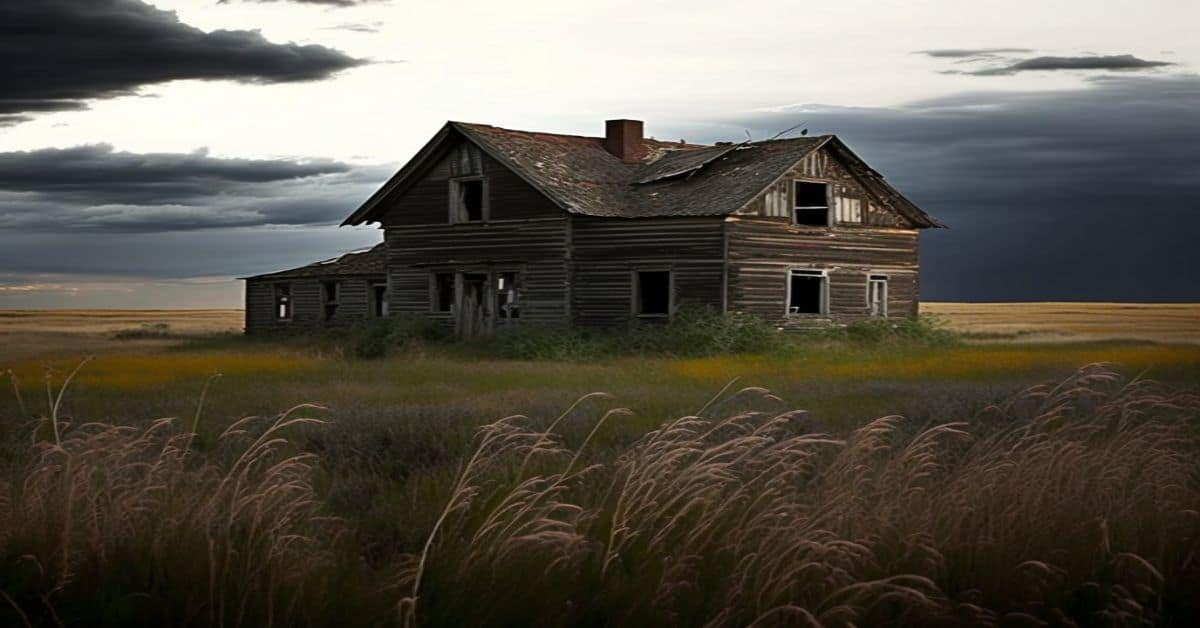Lightning Creek Alluwe Oklahoma Ghost Town is a fascinating destination that provides a glimpse into the history and culture of a once-thriving community. This ghost town, located in Nowata County, offers a unique experience for those interested in exploring the rich past of Oklahoma.
In this comprehensive guide, we will delve into the history of Lightning Creek Alluwe, its rise and fall, the notable events and people associated with it, and how it stands today as a testament to the passage of time.
Early History: From Lightning Creek to Alluwe
Delaware Indians and Lightning Creek
Lightning Creek Alluwe was originally settled by the Delaware Indians in 1869. These Native American settlers were part of the Eastern Delaware tribe, who had signed a treaty with the Cherokee in 1867.
The town received its first post office in 1872, named after the nearby waterway, Lightning Creek.
Renaming to Alluwe
As the town’s population grew and stores were established, the residents changed its name to Alluwe in 1883. The word “Alluwe” is derived from the Delaware Indian language and has several possible meanings, including “superior” or “something better.”
This name change signaled the beginning of a new chapter in the town’s history, one marked by growth and prosperity.
The Oil Boom: Alluwe’s Rise to Prominence
Discovery of Oil in 1905
Alluwe’s fortunes changed dramatically in 1905 when oil was discovered nearby. This discovery was one of the first in that section of Oklahoma, leading to a sudden population increase and an influx of businesses.
The town became a boomtown, with petroleum processing plants constructed to capitalize on the newfound wealth.
Population Fluctuations and the Oil Industry
The oil boom had a significant impact on the population of Alluwe Township. In 1910, the population was 1,332, a figure that reflected the influence of the oil boom. The population continued to grow, peaking at 1,781 in 1940.
However, with a decline in oil production, the population began to drop, falling to 1,152 in 1950.
The Oologah Lake Project and the Birth of New Alluwe
U.S. Army Corps of Engineers and the Oologah Dam
In the 1950s, the U.S. Army Corps of Engineers began constructing the Oologah Dam across the Verdigris River to form Oologah Lake. As part of this project, the government purchased the town of Alluwe, within the Oologah Reservoir project area.
This acquisition marked the end of the original Alluwe community.
Formation of New Alluwe
Many residents of Alluwe, unwilling to let their town fade away, moved a short distance eastward and formed a new community called New Alluwe. This new town was situated along State Highway 28, providing a crucial link to the rest of Nowata County.
The town’s relocation allowed its residents to retain their community’s identity and history.
Notable People and Events in Alluwe’s History
Richard C. Adams: Poet, Attorney, and Historian
One of the notable alumni of Lightning Creek Alluwe’s local country school was Richard C. Adams.
He was a Lenape poet, attorney, and historian who contributed significantly to the understanding and preservation of Native American culture and history.
The Alluwe State Bank and Its Infamous Robberies
The Alluwe State Bank, established in the town, gained notoriety for being the target of multiple robberies between 1916 and 1930. The bank was robbed six times during this period by various gangs and individuals, including the Poe-Hart gang, Tom Slaughter, and Fulton Green.
The bank eventually closed its doors for good on May 23, 1930.
Lightning Creek Alluwe Oklahoma Ghost Town Today
Remnants of Old Alluwe
Today, the original townsite of Lightning Creek Alluwe lies mostly underwater due to the Oologah Lake. However, when the lake’s water levels are low, visitors can still see a few foundations of the once-bustling community.
The ghost town serves as a haunting reminder of the impact of progress and the passage of time on small communities.
New Alluwe: Carrying on the Legacy
The New Alluwe community, formed by residents who moved eastward after the government’s acquisition of the original town, continues to exist today. New Alluwe’s population has remained relatively stable since its formation, with 129 residents in 1980, 83 in 1990, 95 in 2000, and 90 in 2010.
The town serves as a living testament to the resilience and determination of its people.
Conclusion
Lightning Creek Alluwe Oklahoma Ghost Town offers a unique and fascinating look into the past.
From its early beginnings as a Delaware Indian settlement to its rise and fall due to the oil boom, and finally, its transformation into a ghost town and the birth of New Alluwe, the story of Lightning Creek Alluwe is a testament to the passage of time and the resilience of communities that refuse to fade away.
For those interested in exploring this rich history, visiting the remnants of Old Alluwe and the thriving community of New Alluwe is a must.



